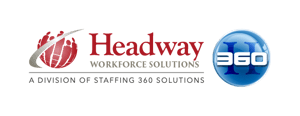Many businesses have a reactive approach to recruiting talent, waiting for an employee to resign before searching for a replacement. This lack of proactive recruitment can compromise your existing team and limit company growth. So, what is a talent pipeline? A talent pipeline is an evolving set of people your company may want to hire in the future, either as replacements for critical positions that currently exist or for future needs. Building a pipeline involves proactively developing long-term relationships with potential candidates who align with your company’s talent needs, both now and in the future. Below are 4 ways to build a strong talent pipeline.
Define your needs
An effective talent pipeline should address short and long-term organizational talent needs. Before sourcing any candidates, sit down with all stakeholders to define and prioritize your requirements. Your talent pipeline is only valuable if it’s full of qualified potential candidates. Do some in-depth research upfront to identify exactly what you need in a new hire and limit your search to individuals that meet these requirements
Leverage employee networks
“Do you know anyone who would be a good fit for this role?” As a recruiter, you probably ask this question dozens of times a week, but have you ever considered just how big a question it is? It is more beneficial to break this down into an easier to digest question like, “Do you know anyone who would make a good field interviewer in New York?”
An incentive program can also provide that extra bit of motivation your employees need to start reaching out to their personal networks. If cash incentives aren’t a viable option for your company, there are plenty of non-cash incentives that work just as well!
Improve your career site
Investing in a career site is a step in the right direction for employers who want to attract top performers. But not all career sites are created equal. Optimize your job openings and job descriptions to target only job candidates that are a good fit for your job opening and company’s culture. Job descriptions should be clear and detailed, and they should describe the roles and characteristics of your ideal candidate or your candidate persona. Ease the job search process by allowing job seekers to use keywords to find jobs they are interested in.
Some companies struggle with high application form abandon rates because of their lack of user-friendliness. Consider using a simple or quick apply form on your site. Only include questions that are absolutely necessary to encourage candidates to apply to your positions.
Focus on employer branding
Understand where your ideal candidates are spending their time and build your employer brand there! What is an employer brand though? Employer branding refers to the way organizations differentiate themselves from competitors in the market for employees. What is your company’s reputation among your workers? How is it as a place to work? Are you paying attention to your Glassdoor rating? How about your LinkedIn page? We guarantee your audience is. These are all important questions, and they all contribute to your employer brand. Employer brand enables those outside your organization to understand your purpose, vision, and culture. It is already becoming an important factor in attracting top talent and will become increasingly important in the coming years.
.
